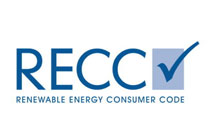Solar panels have become one of the most popular renewable energy solutions for homeowners and businesses across the UK. But how exactly do they work? In this article, we’ll break down the process of how solar panels generate electricity, what materials they’re made of, and the vital role of photovoltaic (PV) cells — the true powerhouse behind every solar panel system.

⚡ 1. How Do Solar Panels Generate Electricity?
Solar panels generate electricity using a technology called the photovoltaic effect. When sunlight hits a solar panel, the energy from the sun’s rays is absorbed by the PV cells inside. This energy knocks electrons loose from atoms in the cells, creating a flow of electric current.
This direct current (DC) electricity then flows through an inverter, which converts it into alternating current (AC) — the type of electricity your home appliances use. The energy can either be used instantly, stored in a solar battery, or exported back to the grid for a feed-in tariff or export payment. This process allows solar panel systems to power homes with clean, sustainable energy directly from the sun.
🔬 2. The Role of PV Cells Explained
Photovoltaic cells, often simply called solar cells, are the essential components that actually convert sunlight into electricity. Made from semiconducting materials like silicon, these cells are designed to absorb photons from sunlight and release electrons in response — creating an electrical charge.
Each solar panel contains many PV cells connected together to increase energy output. There are two main types used in the UK solar market: monocrystalline (known for higher efficiency and sleek black appearance) and polycrystalline (more affordable and slightly less efficient). The quality and arrangement of PV cells directly impact the overall performance of your solar panel system.
Without PV cells, solar panels wouldn’t function — they are the engine behind every solar energy system, making it possible to harness the sun’s power and turn it into usable electricity for homes, businesses, and beyond.


🧱 3. What Are Solar Panels Made Of?
Solar panels are made up of multiple layers that work together to produce electricity and withstand the elements. At their core are silicon-based photovoltaic cells, arranged into a panel and protected by a layer of tempered glass on the front. This glass is designed to be highly durable and weather-resistant while allowing maximum sunlight through.
The back of the panel is covered by a protective polymer sheet, and the entire structure is held in place by a strong aluminium frame. Inside the panel, conductive metals such as silver or copper are used to transport the electrical current. These materials make solar panels efficient, low-maintenance, and capable of producing clean energy for 25 years or more with minimal degradation.
Home EV Chargers
Electric car and EV charger solutions for the home, domestic and residential clients
Work EV Chargers
EV Chargers for work, small and medium sized business, offices and commercial premises
Shared EV Chargers
EV Charging solutions for flats, apartments and shared ownership accommodation
"5 Star Service"
"Solar First were excellent to work with. Great communication, prompt and very tidy, 5 stars. I would definitely deal with them again."
Heather, LOCATION



